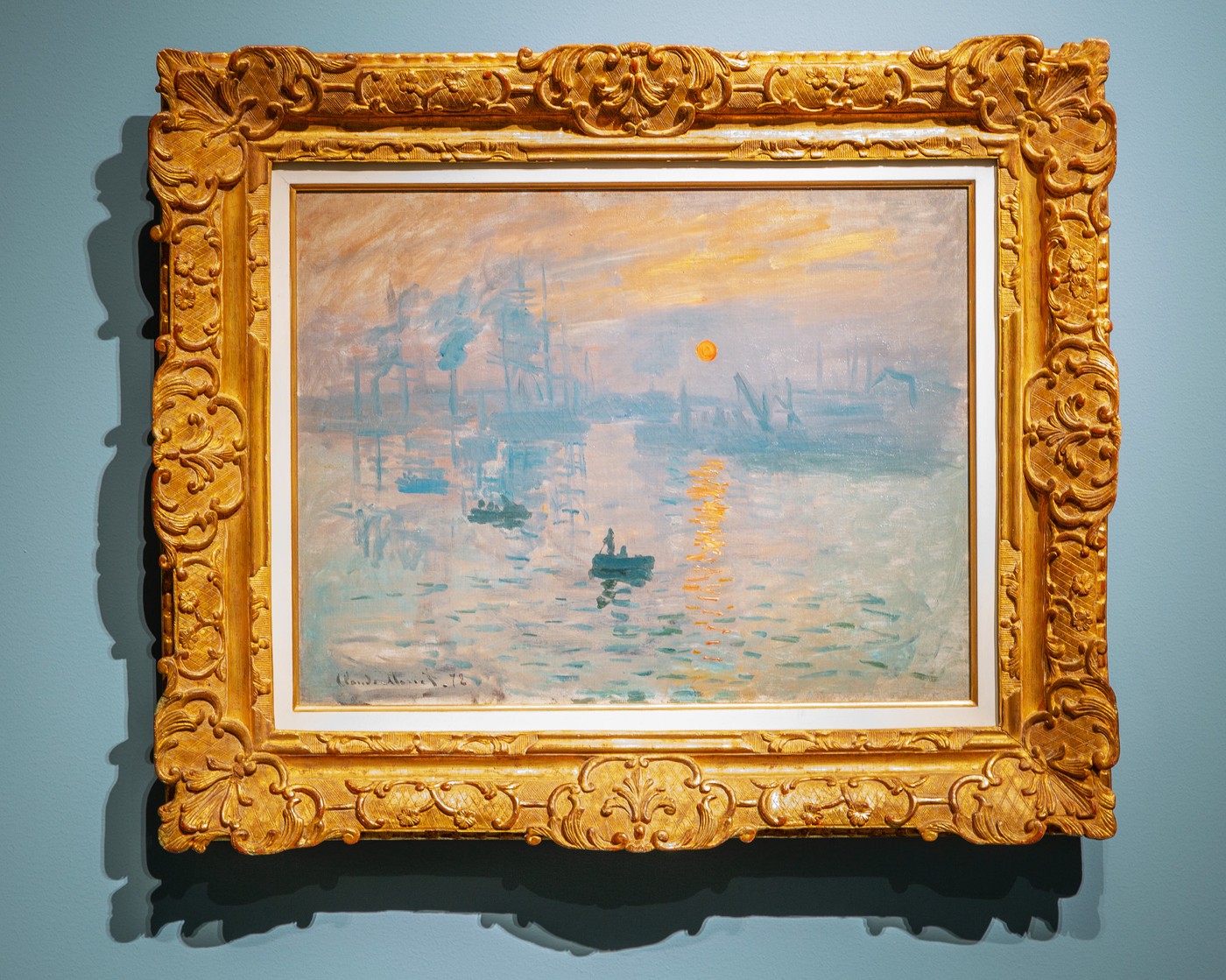
Show Me The Monet, 2005
Oil on canvas in artist’s frame
143.1×143.4cm (56 3/8 x 56 1/2 inches)
Unique, Signed
Sotheby’s London: 21 October 2020
GBP 7,551,600 / USD 9,968,112
Exhibited
Crude Oils, London, October 2005
Show me the Monet is one of the most iconic paintings of Banksy’s provocative oeuvre. It is an extremely rare entirely hand-painted canvas that helped cement Banksy’s position as a controversial and decisive social commentator for our time. It was one of the masterpieces exhibited at Banksy’s landmark 2005 exhibition Crude Oils: A Gallery of Re-mixed Masterpieces, Vandalism and Vermin.
Banksy repurposes an iconic image in the western canon: Claude Monet’s career-defining view of the Japanese footbridge in his water garden at Giverny. With its tongue-in-cheek pun of a title, Banksy’s painstakingly observed re-painting delivers a complex dialogue that tackles prescient issues of our time, such as the environment and the capitalist landscape of our contemporary moment, not to mention the art establishment and its current identity crisis. With a sumptuously rendered orange traffic cone and a thickly textured shopping trolley disrupting the romance of Monet’s iconic Impressionist masterpiece, Banksy’s version is more twenty-first century fly-tipping spot than timeless idyll. Delivered with the ironic dead-pan immediacy of a punchline, the underlying conceptual complexity at stake here belies its humor.

Claude Monet’s iconic images of the Japanese bridge spanning the lily pond of his lush garden at Giverny are some of the most recognizable images in art history. Executed between 1897 and 1899 on canvases measuring approximately 90 by 90 cm, Monet painted twelve variations on this same composition depicting the same view at different times of the day, during different weather conditions and seasons of the year. Representing the apogee of Monet’s oeuvre, these are the holy grail of Impressionist paintings.

Monet’s beautiful paintings of Giverny are today considered a benchmark of established taste and art historical achievement. Yet as an artist building his reputation during the 1860s and into the 1870s Monet was considered a radical. By recording everything he saw and conspicuously refusing to omit ‘ugly’ scenic disturbances in his painting, his works sought to reflect the changing landscape of Modern France as the industrial revolution made its impact on the traditional landscape genre. This was controversial and seen as an affront to contemporary taste, and this revolutionary value has been amplified through Banksy’s reworking over a century later. Echoing the way in which Monet translated the French landscape, complete with evidence of the encroaching industrial revolution, Show me the Monet presents a dialogue on the impact of the corporate world on our environment and the sacrifices made at the expense of so-called ‘human progress’.

As an artwork, Monet’s waterlilies exist at the very apogee of artistic achievement across the last 100 years. In choosing perhaps the most iconic of these paintings, Banksy takes on the height of human civilization in a single image. Universally known and appreciated, its ironic manipulation to include half-submerged shopping trolleys and a traffic cone presents an affront both to an icon of art history while also building on Monet’s radical legacy as a painter of Modernity. Following this thread, however, Banksy explicitly passes comment on our age’s hyper-capitalism and waste. Using a heavy dose of irony and humor, Banksy’s work harbors a greater social agenda.
Claude Monet and Nympheas
Just like Banksy, Claude Monet was quite a revolutionary character for his time…

Born in 1840, Monet was a French painter, and is considered to be the founder of Impressionism and the most consistent and prolific practitioner of the movement’s philosophy… This art movement encouraged expressing one’s perceptions before nature, especially as applied to outside painting, which was quite innovative as most artists had been painting in their studios so far. In that sense, Monet could also be seen as one of the precursor of urban art, except that his urban landscapes were mostly nature.

The term “Impressionism” is derived from the title of Monet’s painting “Impression, Soleil Levant” (translated as Impressions, Sunrise), which was exhibited in 1874 in the first of the independent exhibitions mounted by Monet and his associates as an alternative to what was called the Salon de Paris, one of the precursors of the large art fairs we know of today. Monet‘s ambition of documenting the French countryside led him to adopt a method of painting the same scene many times in order to capture the changing of light and the passing of the seasons. As such, Monet can also be attributed the fatherhood of series paintings that Warhol used most of the time.

Claude Monet, Impression, Soleil Levant, Musee Marmottant, Paris
From 1883, Monet lived in Giverny, France, where he purchased a property and began a vast landscaping project which included lily ponds that would become the subjects of his best known-works. He began painting the water lilies, also called Nympheas in 1899, first in vertical views with a Japanese bridge as a central feature and later in the series of large-scale paintings that was to occupy him continuously for the next 20 years of his life.





